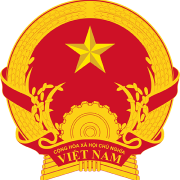
According to the World Bank, in 2020, the value of Vietnam's e-commerce market reached nearly 12 billion USD — 2.5% of GDP. It is estimated that 53% of the population purchased goods online via social networking platforms like Facebook and Zalo, or e-commerce platforms such as Lazada, Shopee and Tiki. The use of digital platforms resulted in an average increase of 4.3% in sales.
Vietnam on the digital map
According to the CHIP Framework, it is possible to compare the results achieved by Vietnam with two groups of countries. The first group consists of eight similar countries. Like Vietnam, they are also middle-income countries where digital transformation is central to their development strategy: Colombia, Ivory Coast, Indonesia, Mexico, Morocco, South Africa, Thailand and Tunisia. The second group is the four countries that are more advanced in terms of economy and digital transformation: South Korea, Malaysia, the Philippines and Singapore.
Accordingly, Vietnam performed well compared to countries in the first group and even those in the second group in some areas, but showed important weaknesses in others. Vietnam seems to have good results in Connect (Pillar 1), with high rankings in terms of mobile phone usage and internet connectivity, although Internet connection speeds were still not as fast as their predecessors.
Vietnam also made progress in the use of new digital tools by businesses and governments, although mainly for basic functions (Pillar 3).
Vietnam ranked relatively low in terms of technology mastery and user protection, with a low ranking in Pillars 2 and 4.
Vietnam's connectivity capacity
According to Pillar 1 of Connectivity: Widespread and cheap, but slow and lagging behind in electronic payments. Affordable high-speed internet connectivity for people, businesses and governments the backbone of any digital economy.
Vietnam has made great strides in expanding internet connectivity from almost zero in the late 1990s to covering 64% of the population today. The fixed broadband connection has expanded more slowly and only recently, but compared to the 12 countries in comparison, only three have a higher number of subscribers per capita than Vietnam. Meanwhile, mobile connectivity has exploded and the number of mobile subscribers is higher than the population of Vietnam.
Vietnam also seems to be very cost-competitive, as internet access is cheaper than most comparable countries. Almost every household in Vietnam, regardless of income and location, owns at least one mobile phone, but access to more expensive technologies is not high.
The Internet has become relatively common in households but the quality of access is still uneven because the 3G/4G21 signal to poor households in mountainous areas is still weak, thus limiting the benefits brought about by digital services and mobile money services. The number of rural households owning a computer is much lower than that in urban areas, and the number of poor households owning a computer is even lower.
The World Bank believes that, to succeed in the digital economy, Vietnam needs to improve the quality and speed of its internet infrastructure. Internet speed is still slow compared to many comparable countries. To be competitive, Vietnam needs to ensure that its entire population has access to at least 4G networks, and - in the near future - invests heavily to expand its 5G mobile network and broadband fiber network, especially for businesses, schools and large organizations.
Vietnam also needs to establish a clear, modern and harmonized digital identification system, which is a necessary foundation of a well-connected digital system. After many years of discussion and negotiation, the legal documents were approved in 2016. In 2021, the competent agencies have accelerated the implementation of the unique personal identification number scheme, with the goal of granting 50 million chip-based identity cards.
Such a system will not only help improve national security, but also play a vital role in citizen authentication, which is essential for improving digital government and providing online service. The system also facilitates the implementation of targeted social security programs and tax collection.
The digital economy also requires secure and high-performance electronic payment systems. Most payment transactions in Vietnam are currently carried out in cash, and comprehensive financial development has been slow. Only 22% of Vietnamese made or received digital payments in 2017 and only 41% of adults had a bank account in 2019.
Access to and development of comprehensive financial development is particularly limited in rural areas. However, the popularity of cheap mobile phones and internet creates great opportunities for the development of digital banking if Vietnam can close the gap in comprehensive financial development.
In recent years, the financial services industry launched a number of new projects, facilitating the growth of digital payments and new financial service channels, and expanding lending models and credit reporting data, government-to-people (G2P) payment solutions, and e-commerce.
Currently, about 32 private service providers are offering digital payment services through bank accounts, including electronic payment services, cashiers, e-money and e-wallets.
The Government's mobile money pilot program, implemented through Decision 316 in March 2021, will help reinforce this trend by targeting a large segment of Vietnamese people who have not yet used the banking services.
The World Bank said that the Vietnamese Government has clearly shown its desire to join the race in the global digital economy. The Government set ambitious goals: Vietnam to be in the group of 50 leading countries in information technology development from 2025; the digital economy to contribute a third of the country's gross domestic product (GDP) at the end of the decade compared with 5% today.
However, the World Bank believes that these goals will be difficult to achieve in a country with a per capita income of less than $3,000 and only 30% of young people continuing to study after high school. Competitors are countries that are both richer and have a more skilled workforce.
